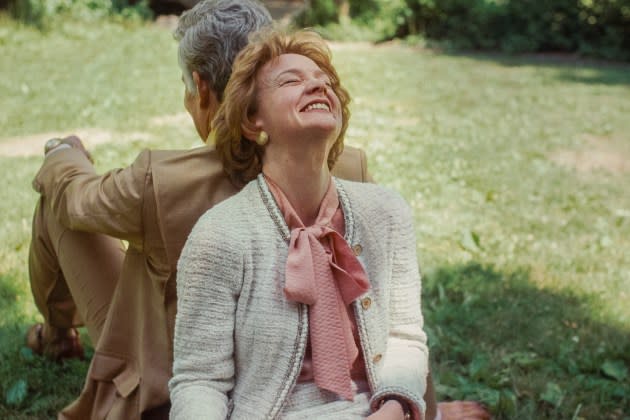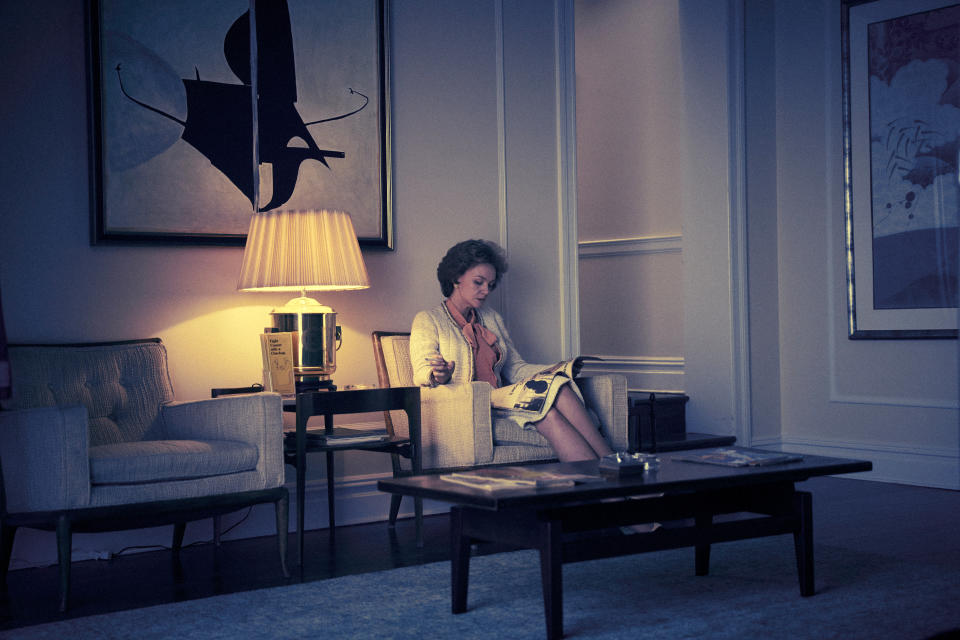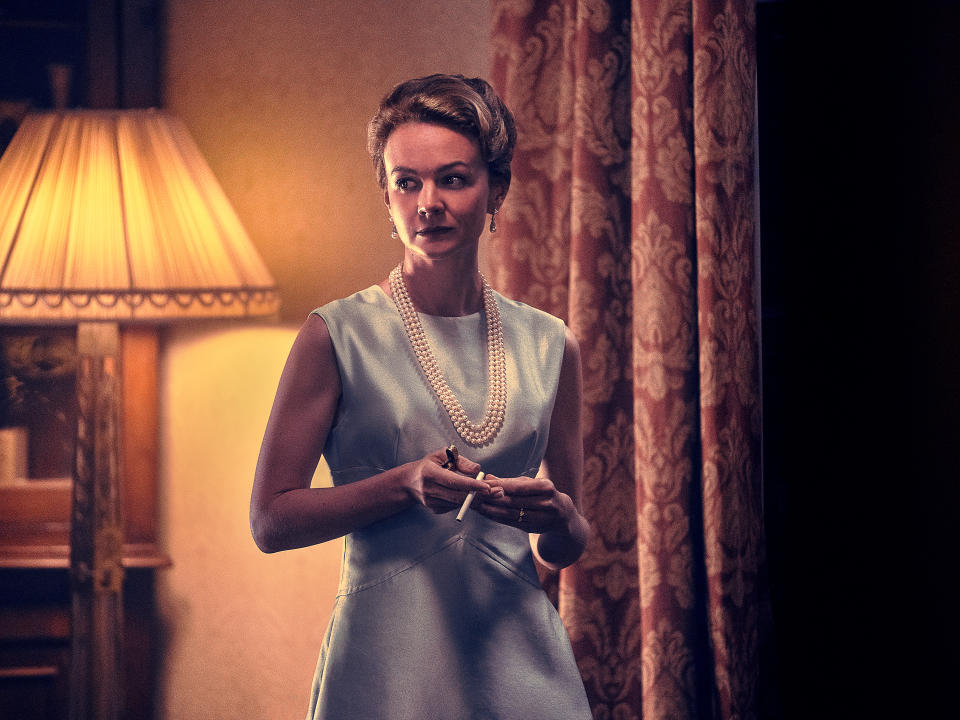How Chanel Helped ‘Maestro’ Costume Designer Mark Bridges Recreate Iconic Tweed Suit
- Oops!Something went wrong.Please try again later.
- Oops!Something went wrong.Please try again later.
- Oops!Something went wrong.Please try again later.
- Oops!Something went wrong.Please try again later.
- Oops!Something went wrong.Please try again later.
- Oops!Something went wrong.Please try again later.

“If you’re going to do a Chanel suit, you have to have respect for it,” costume designer Mark Bridges says. So when Bradley Cooper’s “Maestro” script called for one, he went directly to the Parisian fashion house for assistance.
Spanning four decades, “Maestro” follows Leonard Bernstein’s (Cooper) journey to becoming the legendary composer and conductor. However, the story steps away from being a traditional biopic, instead focusing on the love story between Leonard and Felicia Montealegre played by Carey Mulligan.
More from Variety
In one scene, towards the end of the film, Felicia visits the doctor’s office and is diagnosed with cancer. Bridges notes that the detail of her character wearing Chanel’s iconic tweed jacket was in the script. “I loved that. I think it’s interesting when things contradict the surroundings. It speaks to me as clothes as armor and protection if she was going to get bad news,” says Bridges.
To Bridges, Felicia was the type of woman who shopped on Fifth Avenue or Madison Avenue and had her hair done at Kenneth Battelle at the Plaza Hotel. So, the Chanel suit was fitting.
Bridges contacted Chanel, his assistant who had worked with the company before and explained what it was for and that Mulligan would be wearing it. Says Bridges, “They were on board. They sent us fabric swatches, trims and buttons which are very proprietary on their end, and they sent us a well-packed prototype suit so that my cutter April McCoy could examine how it was made.” With that, Bridges and his team were able to recreate the Chanel suit from scratch with the company’s full cooperation. “They lent us the shoes and handbag,” he says, adding, “All of that comes from reading something in the script. It’s not something to trifle with. If you’re going to make it believable you have to go the whole nine yards.”

Another highlight for Bridges was creating Mulligan’s outfit for the Dakota party. “It was a happy accident,” Bridges says. “I knew she was a chic woman and shopped at all the best stores. Having done ‘Phantom Thread’ and analysis of what makes a good couture dress; the bottom line is the least amount of seams.”
Bridges was browsing through Western Costume based in Los Angeles, looking for the shape of the dress. He found a striking dress in cream which he brought to Mulligan’s first fitting. “It seemed to be a flattering shape for Carey as well as a moment in time. Our party was meant to be in 1969, but we needed to remake it.”
The white dress worked because the fabric had a stiffness to it, but for Bridges, it wasn’t “that great photogenically.” So, his team searched for fabrics that matched the weight and quality of the original dress. Pink was too cloying. I didn’t want it too dark or too pale, but that blue seemed unique to Felicia.”
In the end, a simple sheath dress was made from nine pieces: three pieces around the waist, three pieces around the skirt and three pieces around the top.
The dress is the same one used as the world of the film transitions from black and white to color. “It jolts you into the color in a very beautiful way, and hopefully says a lot about who she has turned into.” He added her signature pearl earrings and necklace. “And we had the matching shoes. You had to have matching shoes.”

When it came to Cooper, one key scene re-creates the musician conducting Gustav Mahler’s second symphony at England’s Ely Cathedral in 1973.
“He was very physical,” says Bridges of Bernstein at that moment. “He’s swept up in the music and you witnessed that in his clothes not being quite perfect.”
The costume designer paid extra attention to the construction of Bernstein’s jacket in the scene. “It needed to hang right and not be gimmicky,” says Bridges, who used wool barathea to create it. “We didn’t use wool stretch or anything — it would not have hung correctly, and we were trying to be as accurate as possible to what he would have worn.”
But the costume designer did experiment with the jacket’s cut. “We tried funny things like adding gussets for more shape under the arm, but that didn’t quite work,” he says.
Over the years, Cooper’s silhouette as Bernstein evolved in keeping with the styles of respective eras. “There’s a broader shoulder in the 1940s,” Bridges observes. “There is a difference in the shape of the
tailcoat from the mid ’50s, where we see the silhouette, in the 1960s he wears slimmer trousers, and the ’70s has less shoulder.”
Bridges used a dozen different watches to indicate different stages of Bernstein’s life. “There was the 1940s, there was a graduation gift,”
Bridges says. “There was a story behind them, because you’re coming from a place of motivation: you’re making money here, this is a dress watch, this is particularly chic.”
Watches were a signifier of who you were, he observes. “Whether you had the Rolex or the Timex said a great deal.”
Best of Variety
Sign up for Variety’s Newsletter. For the latest news, follow us on Facebook, Twitter, and Instagram.

